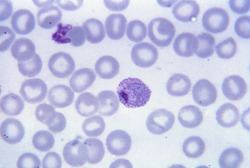Domain Eukarya Scientific name Plasmodiidae | Order Haemospororida Higher classification Haemosporida Rank Family | |
 | ||
Lower classifications Malaria parasite, Dionisia | ||
The Plasmodiidae are a family of apicomplexan parasites, including the type genus Plasmodium, which is responsible for malaria. This genus was created in 1903 by Mesnil. They are one of the four families in the order Haemospororida.
Contents
How to pronounce plasmodiidae
Diagnostic criteria
The diagnostic criteria of the Plasmodiidae are:
Taxonomy
The order has four families: the Garniidae, the Haemoproteidae, the Leucocytozoidae, and the Plasmodiidae.
The Haemoproteidae and the Plasmodiidae both produce pigment, and these have been placed in the order Laveraniina.
Neither the Haemoproteidae nor the Leucocytozoidae have an asexual cycle in the peripheral blood.
The Garniidae do not produce pigment, but do have an asexual cycle in the blood. They appear to be the earliest diverging clade in this group.
The Plasmodiidae contain these genera:
The genus Mesnilium is the only taxon that infects fish. The genus has a single species and has been reported only once. This genus may have been mistakenly placed in this genus. DNA studies are likely to be needed to clarify this point.
